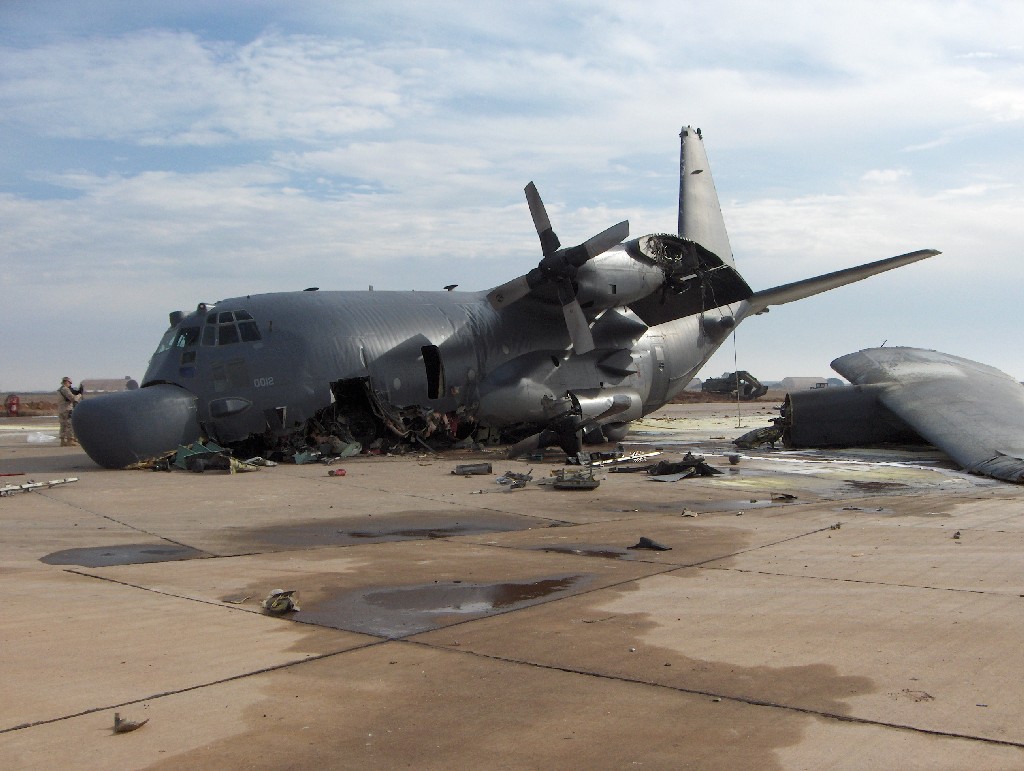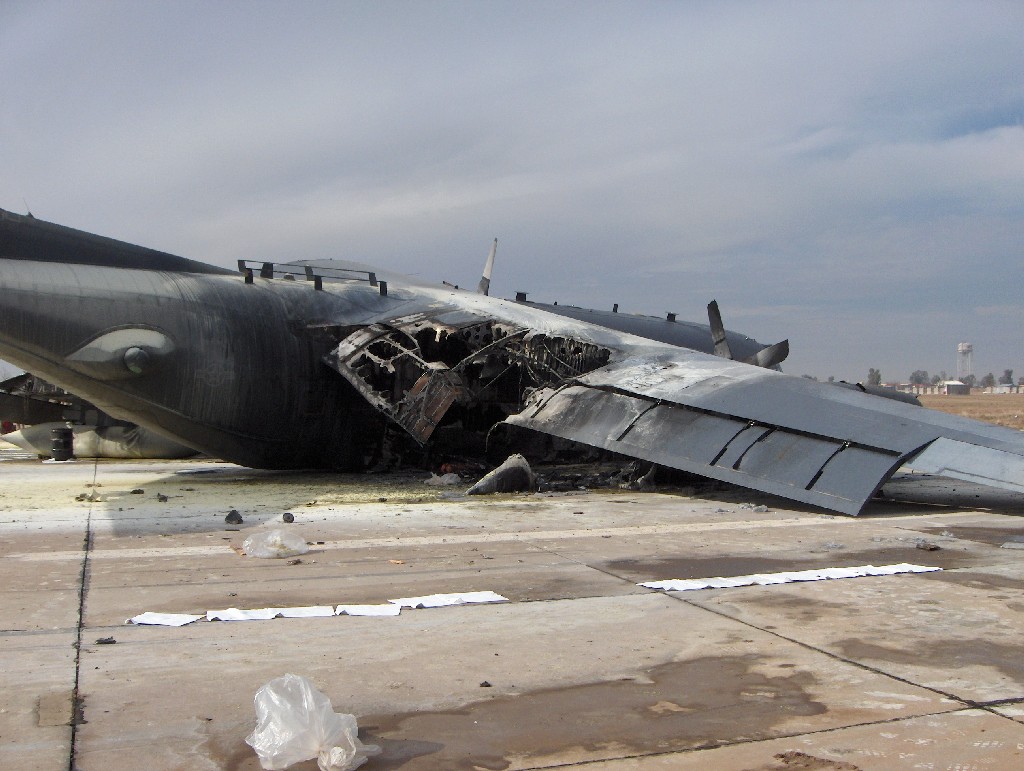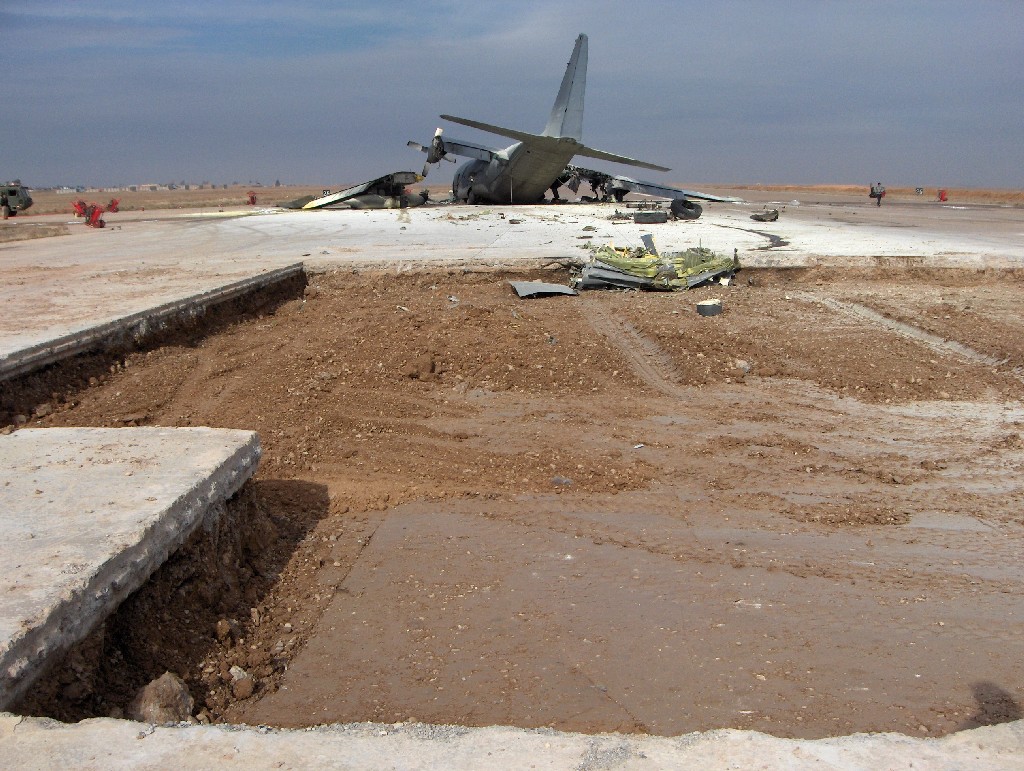Cell phones on planes
December 14, 2005 - Reading time: 5 minutes
It seems that people are skeptical about the dangers of operating Portable Electronic Devices (PEDs) on airplanes. I've heard the same tired argument ("but I leave my phone on all the time, nothing bad happens") several times already. Well, sometimes bad things do happen. Usually not "planes dropping out of the sky" bad, but bad nonetheless. Airplane systems (including Air Phones and the like) are subject to rigorous electromagnetic emission standards to establish and provide control of the electromagnetic characteristics and compatibility of these systems. PEDs, however, are not subject to these restrictions, and electromagnetic interference from PEDs carried on by passengers have been reported as being responsible for many anomalous events during flight. Some examples, provided by Boeing:
- 1995, Boeing 737: A passenger laptop computer was reported to cause autopilot disconnects during a flight. Boeing purchased the computer from the passenger and performed lab tests on the device to see its electromagnetic emissions. The emissions exceeded the Boeing emission standard limits for airplane equipment at several frequency ranges.
- 1996/1997, Boeing 767: Over a period of eight months, Boeing received five reports on interference with various navigation equipment (including uncommanded rolls, pilot displays blanking, flight management computer/autopilot/standby altimeter inoperative, and autopilot disconnects) caused by passenger operation of a popular handheld electronic game device. In one of these cases, the flight crew confirmed the interference by turning the unit on and off to observe the correlation.
- 1998, Boeing 747: A passenger's palmtop computer was reported to cause the airplane to initiate a shallow bank turn. One minute after turning the PED off, the airplane returned to "on course." When the unit was brought to the flight deck, the flight crew noticed a strong correlation by turning the unit back on and watching the anomaly return, then turning the unit off and watching the anomaly stop. Boeing was not able to purchase the actual PED, but contacted the PED manufacturer and purchased the same model. Boeing laboratory emission testing revealed that the unit exceeded Boeing airplane equipment emission levels by up to 37dB in several frequency ranges.
In another widely known incident, in January 2001 a Slovenian airliner made an emergency landing after a passenger's mobile phone caused its electronics system to malfunction and indicate there was a fire on board. The plane was a Canadair Regional Jet CRJ-600, a modern and sophisticated aircraft. In another incident, the pilot's mobile phone was identified as the source of interference causing a loss of GPS guidance on three separate GPS receivers during a Piper Cherokee test flight. USAirways has reported that interference from cell phones used during taxi-in caused the emergency lighting system to activate on one flight.
PEDs have been implicated in interference with many aircraft navigation, flight control, and safety systems: the VOR (VHF Omni-directional Range), LOC (Localizer), CDI (Course Deviation Indicator), Autopilot, pilot displays, FMS (Flight Management System), TCAS (Traffic alert and Collision Avoidance System), radio communications, radar altimeter, IRU (Inertial Reference Unit), ILS (Instrument Landing System), smoke/fire detectors, and aircraft spoilers, among others. Laptops and cell phones have been the biggest offenders, with handheld game devices and portable TV/DVD players close behind. Boeing also conducted laboratory and airplane tests with 16 cell phones typical of those carried by passengers; the results indicated that phones not only produce emissions at their operating frequencies, but also produce other emissions that fall within airplane communication and navigation frequency bands (such as the Automatic Direction Finder, High Frequency, Very High Frequency [VHF] omni range/locator, and VHF communications and the Instrument Landing System [ILS]). Emissions at the operating frequency were as high as 60dB over the airplane equipment emission limits.
It's not just PEDs, either. In early production runs of a particular Lear Jet, the Radio Direction Finder (RDF) would peg to one side if the window defroster was used, because the little defrosting wires on the glass were right next to the RDF instrument. Were a pilot to follow the RDF when the defroster was switched on, he or she would be flying in a tight circle. This is an extreme example, but more minor examples exist. Interference could cause just enough of a change in an automated system that people wouldn't notice a change in direction but the pilot could land at the wrong airport by accident (this actually happens quite frequently).
Is it possible that electromagnetic interference could bring down an airplane? Yes. A seven month study by the US Air Force completed in late 1998 concluded that "thousands of conflicts" among radio frequencies used by the three branches of the US military had produced grave outcomes. According to Colonel Charles Quisenberry, the director of the study, EMI can "affect the electrons within the aircraft's flight controls as well as its fuel controls ... putting a plane into an uncommanded turn or dive or turning off its fuel supply." Some forms of interference, he stated, "are very, very critical -- some cause aircraft to crash." He gave some instances where this was the case: because of EMI, Black Hawk helicopters crashed and killed their crews five times between 1982 and 1988, with 22 deaths. "The Black Hawk was shielded at a very low level -- it was known ahead of time that its shielding was inadequate." One Army aviator had gone on public record saying that "EMI is causing these aircraft to flip upside down and crash and kill everybody aboard."
Lots of electronic devices put out RF interference in unpredictable ways, and more and more devices come out all the time that are small and light enough to carry on to the plane. The FAA has banned the use of all electronic devices during takeoff and landing because of this uncertainty. Because of strong contrary public opinion, PEDs have not been banned outright on flights, but given the uncertainty, it is probably safest to switch them off as soon as the boarding door closes, and leave them off until the door has opened.
No talking on the plane
November 30, 2005 - Reading time: 5 minutes
I stay in hotels a lot these days, and most hotels that I stay at plop a free copy of USA Today at my door every morning. So I read a lot of USA Today as well.
In today's USA Today there was an article by Kevin Maney in which he discussed the pummeling of people who carry on loud phone or VOIP conversations on airplanes. This is something I approve of, but he also made some flippant remarks about how cell phones really aren't the safety hazards that the FAA makes them out to be. I disagree on that, and wrote him an e-mail saying so. Then I decided that since I haven't posted anything here in a while, I could use that e-mail to waste some more bandwidth. So here it is:
I've just been reading your article in Wednesday's USA Today: "In-flight cell calls can't annoy fliers, but over-the-Net calls can." I'd like to disagree with you on a peripheral comment you make in a couple of places.
I agree wholeheartedly with the main point of your article, that people yammering on cell phones in airplanes should be pummeled. There should be a special kind of abuse reserved for people whose cell phones turn on the second the plane's wheels touch the ground, so they can make the call "Hi! Yeah, we just landed. No, still on the plane. Taxiing to the gate. OK! See you soon." I mean really ... couldn't that call wait 5 minutes? Cripe.
But that's not my issue. You also ask "Who really believes a cellphone signal is going to scramble cockpit controls and bring down a jet?" And later, "...Ryanair's concept says a lot about the dangers of cellphone use on planes, no?"
This is where I disagree. I'm an electronics engineer; I worked as a contractor for the FAA dealing with navigation and landing aids for two years, and during that time I got to see what the reasons behind the FAA's rules are.
You've probably seen a label on the back of electronic devices saying that it complies with Part 15 of the FCC Rules, and that it may not cause harmful interference. Part 15 also stipulates that "An intentional or unintentional radiator shall be constructed in accordance with good engineering design and manufacturing practice." Fair enough, but the fact is that with the recent boom in cheap 802.11 and other wireless devices, this is not always the case.
Ideally, your cell phone or laptop won't cause interference that would scramble cockpit controls. However, if the device is poorly designed, or a 1-2 cent component in the RF section of the device is defective, there is no telling what sort of interference it could cause. Aviation navigation equipment is designed to be robust and fault tolerant, but it is also high-performance equipment, very sensitive and very precise, which makes it more susceptible to interference. There is a documented case of a 1 Megawatt mountaintop radar facility being knocked off line by a wireless 802.11b video security camera, purchased for under $50, that was over 7 miles away. The interference was caused by a harmonic over 1GHz outside of the frequency range of 802.11b; the camera was just defective. There are plenty of similar incidents documented, demonstrating that strict rules are justified.
Will an errant cellular phone cause an airplane to fall out of the sky? Not likely. But recent reductions in the minimum separation requirements for commercial air traffic can only be construed as safe if all of the RF-based navigation, collision avoidance, and location-notifying systems are operating correctly. Once the plane is on the ground, different RF-based systems kick in to help prevent ground collisions on increasingly crowded airports.
The FAA, like other government agencies charged with protecting citizens from themselves (CDC, FDA, FCC, etc), are often hampered by public opinion: people are willing to take risks because they don't understand them, and people react violently when things they regard as convenient are taken away in the name of safety. How do you explain the fact that when the boarding door closes and the aircraft begins to taxi, you have to turn your cell phone off, but as soon as the plane is on the ground, well before the boarding door opens, you're allowed to turn the phone back on? Try telling the person sitting next to you that he or she has to wait another 2 minutes before turning their phone back on: then you'll be the one getting the beating. The same goes for your laptop: you're supposed to turn off anything with an antenna, yet as soon as your laptop boots, its wireless Ethernet device is activated and starts scanning the area for access points. Think of the $.05 worth of low-bid electronic components that are supposed to keep your laptop's emissions in check next time you fire it up mid-flight to finish an article. Will you think twice? Or will you dismiss safety concerns as overly cautious? After all, you've used your laptop on the plane before, and there were no consequences. Why should this time be any different?
And they're off
July 26, 2005 - Reading time: 2 minutes
The Shuttle Discovery lifted off this morning! There was a really cool view of the launch from the camera mounted on the external tank. The neatest things about that view were the fact that it was so stable, and also the amazing view of the planet dropping away.
I'm at work, so I had to watch the launch on the TV in the break room, which is perpetually tuned to Fox News. That was unfortunate, but they had live coverage of the launch so it worked out well. It was kind of amusing, because they're suddenly excited about space now, so they were really hyping it up and talking about what an amazing thing it was that just happened, and how we're the only country in the world that can do this (apparently Russia and China don't count) and how it's such a shame that people stopped paying attention to space. I'm just going to stop thinking about this before it gets out of hand.
But anyway, yeah ... Discovery is up.
Meet Clio!
April 13, 2005 - Reading time: ~1 minute
Note: Clio passed away February 4, 2019 :-(

I got a puppy! Her official name is Marchwind Sonrisa de Alegría (Marchwind smile of joy), begotten of Ch. Belcanto Eight is Enough and Ch. Marchwind Nicole, but that's a bit cumbersome so I'm going with Clio (who was, for the lazy but curious, the muse of history). She's just about 10 months old, and (coincidentally?) I've been talking like a 10 month old recently. I'll try to snap out of it...
Misappropriated holidays
March 17, 2005 - Reading time: 4 minutes
Every year on St. Patrick's day I have to wonder how a Catholic holiday can come to America and end up as an excuse for binge drinking. And more importantly, why this particular one, for several reasons.
First, a bit on St. Patrick: Irish? Nope. He was actually born in Scotland, and lived most of his life in Britain or France. But that's a minor point, especially given the fact that the Irish tend to hold him in high regard.
Fine. That one I can overlook, but there are better reasons to choose a different saint if you're looking to cut loose and have a bit of fun:
- St. Patrick is credited with converting the Pagan Irish to Catholicism, but actually many Irish were already Christian; they had just drifted from Catholicism to an apparently unacceptable form of Christianity known as Pelagianism, which (in a nutshell) says that St. Augustine was being a bit pessimistic in his view that humanity is sinful by nature and must rely totally upon grace for salvation. Those heretical Pelagians thought that people were essentially good, and didn't need to go broke supporting the Catholic church to get to heaven. So St. Patrick really saved the Irish from their happiness (and their money) by converting them back to a more strict flavor of Catholicism. Given that cutting loose and having a good time is likely to get you stoned as a Catholic, the holiday as we know it doesn't really make a lot of sense.
- St. Patrick died in the year 493; the holiday wasn't first publicly celebrated in America until 1737. Why? Why indeed: just what does making the Irish unhappy have to do with Americans? I mean there's not even much sport in that. Perhaps it's because many of the unhappy Irish eventually came here?
- If you're looking for an excuse to drink, there are better saints to choose from, too. There are three Christian saints that are generally listed as patron saints of brewing: Saint Augustine of Hippo (who was known for wild living and heavy drinking before he converted, and heavy drinking but less fun afterwords), Saint Luke the Evangelist (who as a physician noted that the beer of the time was healthier than the water of the time; Saint Arnold of Metz reached the same conclusion about 500 years later, making him another good choice), and Saint Nicholas of Myra, aka Santa Claus (the red face and beer gut would make him perfect, except that we already have a day associated with him, and doubling up holidays is no fun). Other saints got in to beer as well; Saint Columban miraculously created beer for some Germans as a missionary; Saint Bright changed water into beer to feed lepers (she also brewed beer the old fashioned way each Easter, to supply the churches in the neighborhood); Saint Mungo, the patron saint of Glasgow, Scotland, established a religious brotherhood there in the year 540, and the brothers there brewed to supply other groups (brewing beer is still considered the oldest industry in Glasgow). Where does St. Patrick fit in? According to Senchus Mor, the book of the ancient laws of Ireland, he had a priest in his household that was a brewer. Come on ... I mean there are even other Irish saints, like Saint Brigid (who miraculously transformed her dirty bathwater into beer so that visiting clerics would have something to drink), to choose from. So on this angle, I really think you could do better.
I mean I'm not trying to spoil anyone's fun, but can't we come up with our own holidays? We could even keep the "green" theme if we scoot the holiday up a few days, to the first day of spring. There's no reason to make a mockery out of other cultures' holidays; we should really be able to come up with our own.
Trench: 1, C-130: 0
January 22, 2005 - Reading time: 2 minutes
Normally, when construction work is being done on an airport runway, there are several safety precautions that are taken. In addition to safe work practices, a large "X" is placed at the end of the runway under construction (sometimes the "X" is lighted), and the airport issues a NOTAM (Notice To Airmen) to inform any pilots that might be landing at that airport that the runway is not in service.
Normally.
In mid December, a C-23 Sherpa flew into a US operated airfield in Iraq during the day and the pilot saw, much to his surprise, that there was active airport construction and a trench was being dug across his runway (no NOTAM had been issued, and there was no runway marker). Fortunately, the runway was long enough that the pilot was able to land beyond the construction. The flight crew filed a safety hazard report, which was immediately sent along the proper channels and then forgotten.
Until the night of December 29th, when a C-130 was landing at the airport; it was dark, and the pilot did not see the construction, so the plane ran across the ditch. There were several injuries, but no deaths, and the plane was totaled.
As a concerned taxpayer, I'm sure you'll agree that the senseless loss of a cool military aircraft is absolutely unacceptable, unless there are cool pictures of the accident. So here you go:





Food for thought
November 22, 2004 - Reading time: 2 minutes
This would normally be another rant, but it's late and I'm tired so it's going to be short.
Anyway. I was just reading about the Soviet Space Battlestation Skif, which was the Soviet Union's response to Reagan's Star Wars program. What's interesting about it isn't the concept of space-based warfare so much as the method that was to be used to put it in to orbit: the Energia booster rocket, the same vehicle used on the Buran space shuttle.
Why is it interesting? Because that's what the Space Transport System is supposed to be (as I understand it) - a booster platform to loft things in to space. The Shuttle is just something that gets tacked on to the side of it. In all of the talk of what to do about the Shuttle, maybe it's worth noting that the STS is still a nice way to put lots of things into space; not just the Shuttle.
One of the concerns about the early termination of the Shuttle program is what to do with the ISS; well, why not strip the life support equipment out of one of the Shuttles and make it a fully automated box that just goes in to orbit? The Soviets did it with the Buran, and it seemed to be able to get up and down without incident (the problems with the Buran all involved what happened once it was on the ground). With life support equipment removed from the Shuttle, heavier cargo could be lifted as well. And when it's time for people to go to and from the ISS, a crew module could be fit in the cargo bay of the Shuttle. It might seem odd having the Shuttle crew as passengers, but why not? After all, the Shuttle wasn't supposed to be the glamorous part.
Just a thought. I'm off to bed.
